
With oversized eyes that look directly ahead, owls have a familiar, relatable appearance, and their characteristics are often associated with wisdom or, sometimes, mystery. Regardless, owls capture the imagination. Here are a few of our favorite (mostly) night fliers.
Most Diverse Eater
BARRED
The classic whoo cooks for you, whoo cooks for you all is the sound you'll hear most often from barred owls, but they make any number of hoots, shrieks, cackles and caterwauls too. Large nest boxes can accommodate them, but they'll also nest in natural cavities. Occasionally these birds take over a stick nest from another raptor.
The barred owl is one species whose distribution expanded throughout the 20th century. The species was predominantly found in the East, especially in southeastern swamps and woods. Over the last 100 years, barred owls have pushed west across Canada and then south into the Pacific Northwest. This is good news for barred owls but problematic for the closely related, and more passive, spotted owl. But barred owls aren't always the dominant bird-great horned owls can be a major predator on barred owls, where their ranges overlap.
As expected for a species with such a widespread distribution, barred owls' diets vary based on their habitat. Their feasts can include anything from crayfish, fish and frogs to small mammals and birds.
Until recently, an isolated population of barred owls in Mexico was considered a subspecies, but in 2021 researchers determined these birds were a separate species now known as cinereous owls.
Most Elusive
GREAT GRAY
This story is from the {{IssueName}} edition of {{MagazineName}}.
Start your 7-day Magzter GOLD free trial to access thousands of curated premium stories, and 9,000+ magazines and newspapers.
Already a subscriber ? Sign In
This story is from the {{IssueName}} edition of {{MagazineName}}.
Start your 7-day Magzter GOLD free trial to access thousands of curated premium stories, and 9,000+ magazines and newspapers.
Already a subscriber? Sign In

Sense or Nonsense? - Why some birds can taste and smell - but others can't
Does a porcelain berry taste like a blueberry to a gray catbird? Does a block of lard smell like frying bacon to a northern flicker? The short answer is no. While some avian species do have a well-adapted sense of taste or smell, they can't distinguish between flavors and odors the way humans can. They're not picking up every ingredient in the suet you put out, says José Ramírez-Garofalo, an ornithology researcher at Rutgers University in New Jersey and the director of Freshkills Biological Station in Staten Island, New York.

Maple Mania - Amazing facts about this fall foliage mainstay
Amazing facts about this fall foliage mainstay
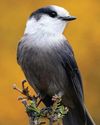
Food-Focused and Fierce - Meet Canada jays and learn why they eat almost anything they can find
Even if you haven't heard of Canada jays, you've heard of their relatives. Members of the corvid family, they belong to the same group as American crows, blackbilled magpies, and jays including blue, Steller's and scrub. "Unlike many of the other jays, a Canada jay doesn't have a crest of any kind; it just has a rounded head," says Dale Gentry, director of conservation for Audubon Upper Mississippi River.In 2018, the Canada jay's name was changed from gray jay, but Dale thinks the former adjective was fitting. "Most of its body is shades of gray with some white," he says. "There are different subspecies that have different physical traits, but most of them have some lighter coloring on their foreheads, upper breasts and throats, each with a darker streak that starts at each eye and goes back."
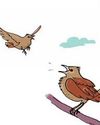
IN GOOD COMPANY
BIRDS OF A FEATHER MAY FLOCK TOGETHER, but what about other collectives of critters-and what do you call them when they do?
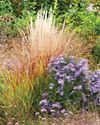
YOUR OWN Perfect Prairie
Learn how to cultivate an oasis of grassland flora in your backyard

ON THE MOVE
Birds approach the challenges of migration in surprising ways. Learn about how they walk, swim or take the scenic route during their travels.
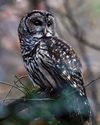
Autumn Wonders
Fall colors offer befitting backdrops for these stunning reader photos
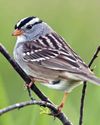
Sparrow Look-Alikes
Distinct sounds help separate these similar species
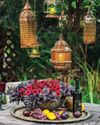
Embracing the Darkness
From black plants to moody decor, Gothic garden elements can offer a unique outlet to express your dark side

Red-Hot Plants
Scarlet-hued berries add a pop of color to any garden